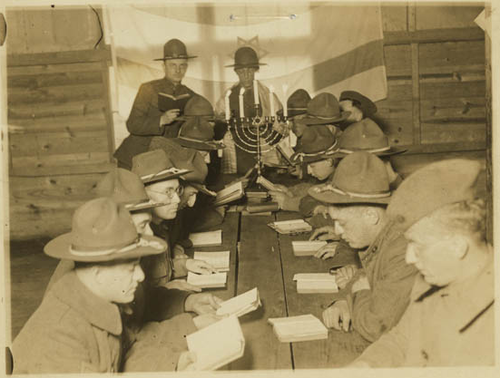By Zachary Loeb, M.S.I.S. Reference Services Librarian – Patron Services
“Comrades, the First of May is the bridge between ourselves and the future. It is the mighty cable which connects us with the international proletariat. Let us meet the great holiday of the proletariat; not with the dangerous indifference of the defeated, but with the joy of the victory of to-morrow.” – The Central Committee of the Jewish Labor Bund (“May Day in Russia” – 1908)
After a long cold winter the arrival of spring can seem a cause worthy of celebration – and for those who feel as though they are laboring in a long cold winter the very idea of spring can be an occasion for revelry. Though May Day has ancient roots as a seasonal event, in the late 1800s the holiday was taken up, and transformed, by the labor movement, who changed the day into an annual political event. On May 1, 1886, workers across the US took to the streets to demand an eight-hour work day, but the event that would truly transform the holiday occurred on May 4 in Chicago. The events came to be known as the Haymarket Affair and the executed men came to be seen as martyrs to some. The events served to greatly galvanize the labor movement of the time – and thus, in 1889, the Second International called for May first to be formally recognized as a day for international demonstrations. In the years following the Haymarket Affair, May Day grew internationally with marches and rallies being held in cities around the world. In many cities May Day became an occasion for disparate segments of the left and the labor movement to come together in a show of strength and solidarity. Though May Day rallies grew throughout the early twentieth century the size of the celebrations shrunk amidst political repression, widening gulfs within the labor movement, and the displacement of May Day with state sanctioned occasions such as Labor Day– particularly as, in the years following WWII, May Day often came to be closely associated with the Soviet Union. Nevertheless, in recent years May Day has seen something of a resurgence.
Throughout the 19th and 20th century – and continuing today – Jews and people of Jewish ancestry have been prominent figures in the left and labor movement ranging from the anarchist Emma Goldman to Samuel Gompers who founded the American Federation of Labor. The Yiddish press in the US, and internationally, was often a rich location for left leaning and pro-labor discourse with newspapers such as the Jewish Daily Forward commanding a readership in the hundreds of thousands at its height. While political organizations such as the Jewish Labor Bund and Yiddish speaking mutual aid societies brought together Jewish workers and left-wing activists. Looking through old photographs of May Day celebrations it is not at all uncommon to see placards in Yiddish.
The collections of the partner institutions at the Center for Jewish History contain a fantastic assortment of material for those interested in the history of the left, labor, and of Jewish involvement with these movements. A small sample of some of the material available at the Center:
Workmen’s Circle Collection – American Jewish Historical Society Archives Call Number, I-304
A Fire in their hearts: Yiddish Socialists in New York – by Tony Michels – YIVO Library, Call number 000117422
Bund Archives – YIVO Archives, Call Number RG 1400
Jewish Counter Culture Collection – American Jewish Historical Society Archives Call Number, I-504
Samuel Gompers collection American Jewish Historical Society Archives Call Number P-416

